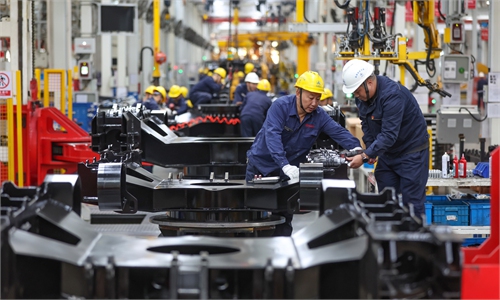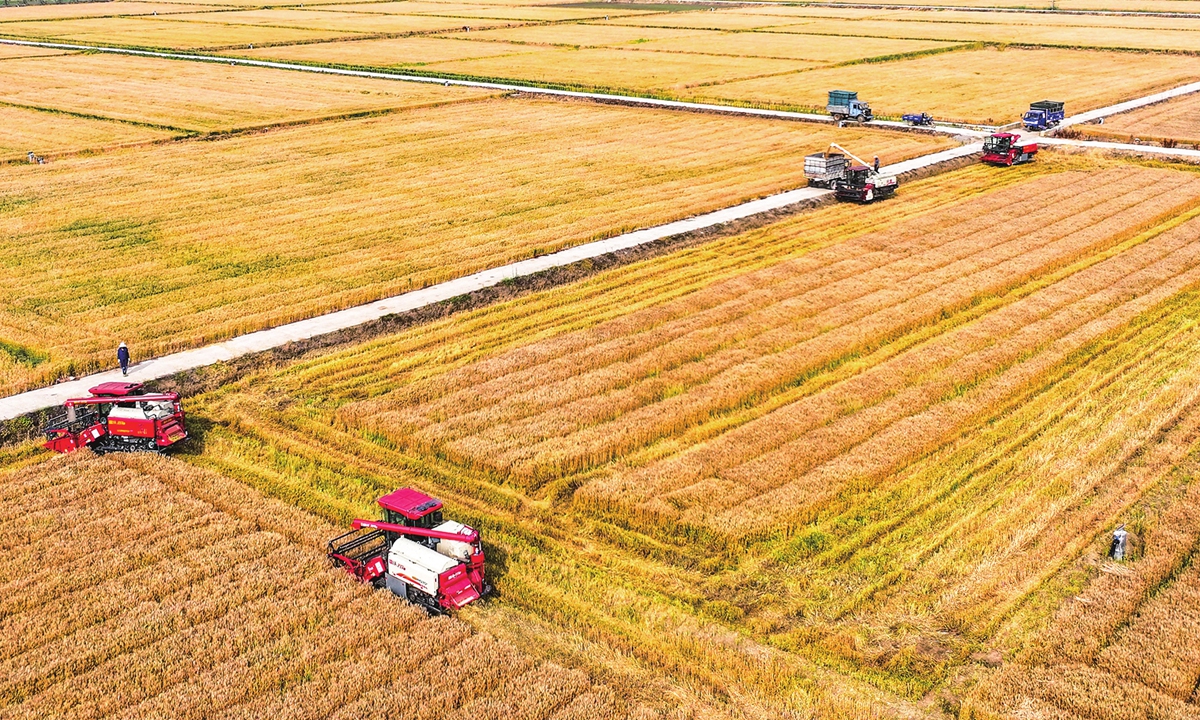
A farmer sprays pesticides in the corn field in the Tacheng Prefecture, Northwest China's Xinjiang Uygur Autonomous Region with a spray truck on May 14, 2024. Photo: VCG
As summer begins, various regions in China are making every effort to ensure a successful summer harvest.
There are three different grain production seasons in China: summer grain, early rice and autumn grain, accounting for about 21 percent, 4 percent and 75 percent of the annual grain output respectively.
Summer grain is the first season of grain production in the whole year and mainly includes summer harvested grains, beans and potatoes. Among them, summer harvest cereals are mainly wheat, barley, oats, buckwheat, and etc.
The wheat growing period is from October of the previous year to June of the current year, and summer grain procurement is generally from mid-May to September 30 of the current year. This years, 6.5 percent of summer grain has been harvested nationwide as of May 17, according to a report of people.cn that day.
In Southwest China's Sichuan Province, 80 percent of the total 9.1 million mu (600,000 hectares) of wheat planted in the province had already been harvested, according to a report by China Central Television (CCTV) on Tuesday.
To improve the wheat harvest, authorities in the Xuanhan county in Sichuan have organized agricultural experts to go down to the fields to guide local farmers in fertilization, weeding, pest control, and other field management work. They have been providing full-process tracking services starting from the selection of corn varieties, ensuring a high-yield harvest for corn in the county.
So far, more than 420 county and township agricultural technicians have been deployed to carry out technical training and guidance for over 170,000 people at the grassroots level, people.cn reported Tuesday.
"This year, the corn is growing well. The agricultural technicians have taught us about disease prevention, pest control, and fertilization, making us confident about the upcoming harvest," Xuanhan farmer Ao Mingchun told people.cn with a smile.
In the wheat-producing areas of southern Hubei in Central China, the harvest is nearing completion, while the main producing areas in the north have begun large-scale mechanized harvesting. Various areas have set up cross-district operation reception stations for farm machinery operators to ensure logistical support.
In East China's Anhui Province, one of China's main agricultural provinces, more than 43 million mu of wheat is being harvested from south to north. The province plans to deploy approximately 170,000 high-performance combined harvesters and take advantage of the upcoming sunny weather in the next few days to accelerate the harvest. At the same time, various regions in Anhui are preparing for grain storage to ensure the safe storage of summer grain.
Zhu Geng, director of the grain development affairs center in Linquan county, Anhui, told CCTV, "Our county has already cleaned and warehoused around 450,000 tons of wheat, showing an increased warehouse capacity of 20 percent compared to last year. The county is also fully preparing for cleaning, drying, storage, processing, and sales for farmers."
New equipment and technology are being used to assist in the summer harvest according to local conditions.
At a farm in Dacaozhuang village in Xingtai, Hebei Province, a self-propelled irrigation machine that combines watering, fertilizing, and spraying pesticides can cover 600 mu of land a day. Authorities along the Hexi Corridor in Northwest China's Gansu Province are also vigorously promoting new wheat irrigation technologies, like drip irrigation technology, to save on water and fertilizer. For example, Jiuquan city is focusing on developing more than 1.3 million mu of efficient water-saving farmland.
"We have changed from watering the land to watering the crops, increasing our water utilization rate by 30 percent and our fertilizer utilization rate by 20-30 percent," Zhu Xiaotao, director of the agricultural technology promotion center in Jinta county in Jiuquan, told CCTV.
In Central China's Jiangxi Province, 2.1 million mu of early rice in Ganzhou has entered the tillering stage, meaning it is crucial that work to prevent disease and pests is carried out. This year, the local government is actively promoting the use of solar-powered insecticidal lamps, plant protection drones, and other multi-level pest control methods to enhance pest control efficiency and solidify the foundation for a bountiful harvest.
The optimal harvesting period for wheat is only 3-5 days. So to ensure a successful wheat harvest, many enterprises and local governments have also utilized technology such as big data to build intelligent service platforms.
A company in Laixi in East China's Shandong Province has established a smart agriculture big data platform on which farmers can set programs on their phones to control irrigation machines and drones. In 2024, the wheat planting area in Shandong reached over 60 million mu, with a stable increase compared to the previous year and a total output that is expected to reach a new historical high.
In response, the number of cross-district harvesters in Shandong is expected to increase by around 10 in 2024. Local harvester companies have established intelligent service platforms for customers to view information such as the maturity period, cluster distribution, and weather warnings in various regions, improving the convenience of cross-district operations.
Global Times
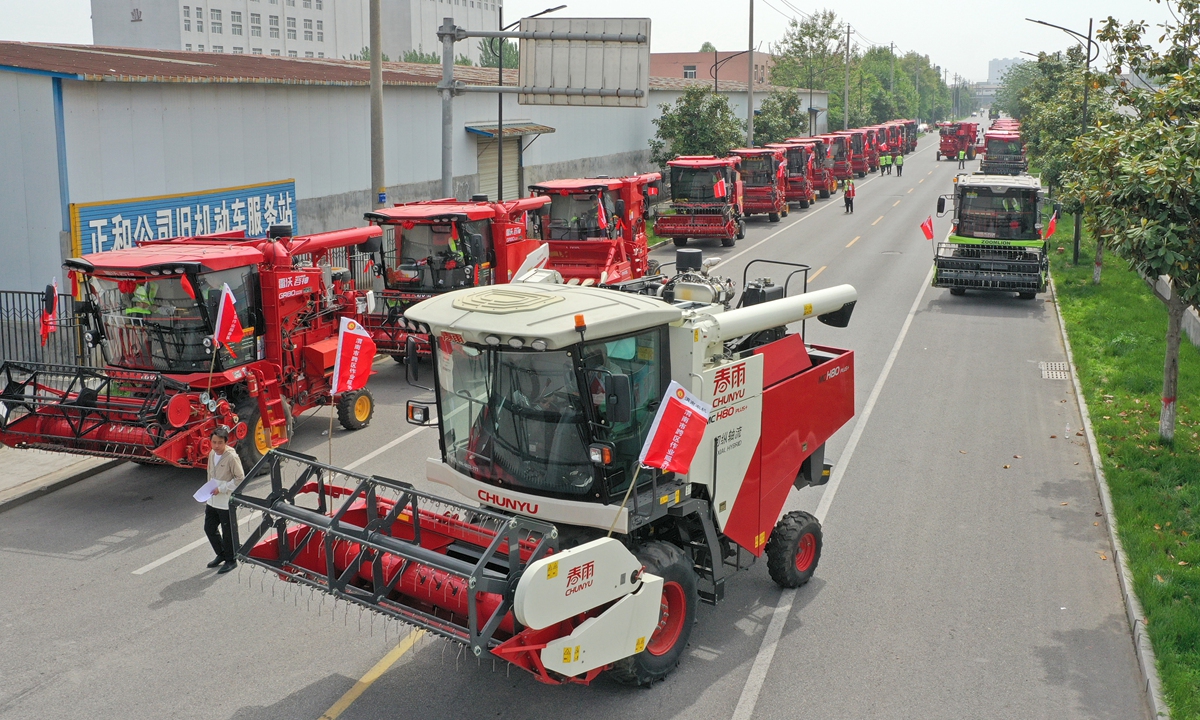
Working staff check combine harvesters before they depart for cross-region work in Weinan, Northwest China's Shaanxi Province, on April 22, 2024. Photo: VCG
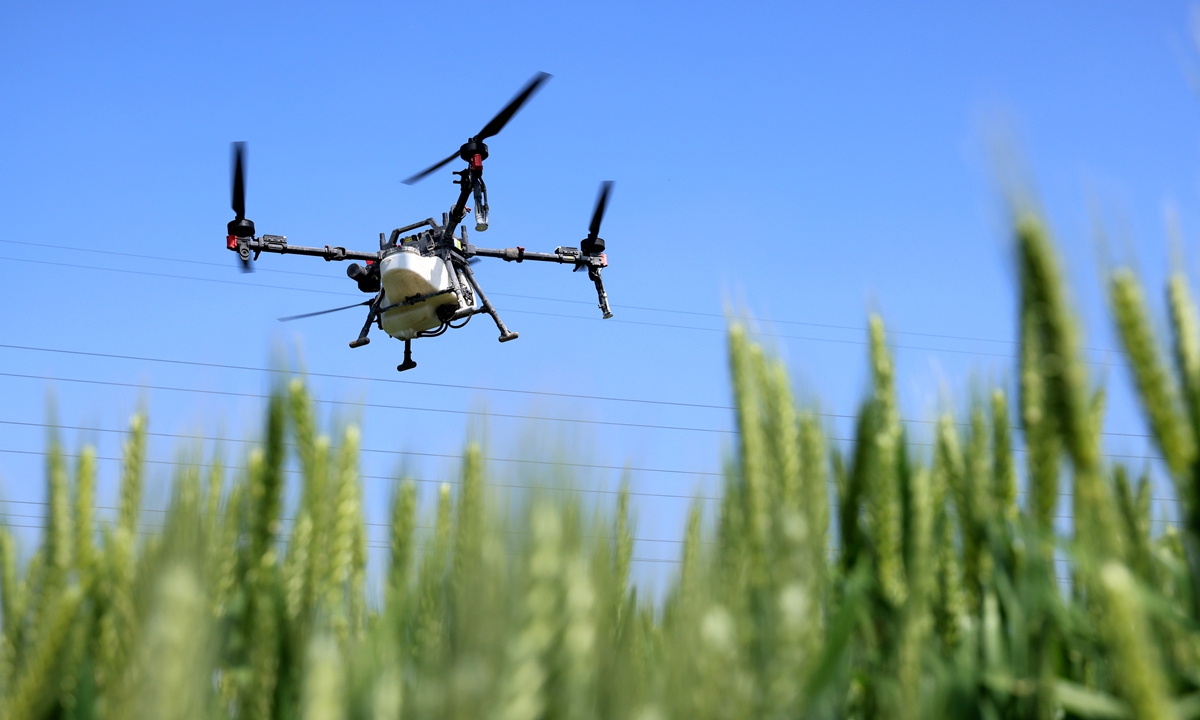
A drone sprays combination of insecticide and nutrient solution in the field in Zaozhuang, East China's Shandong Province, on April 27, 2024. Photo: VCG
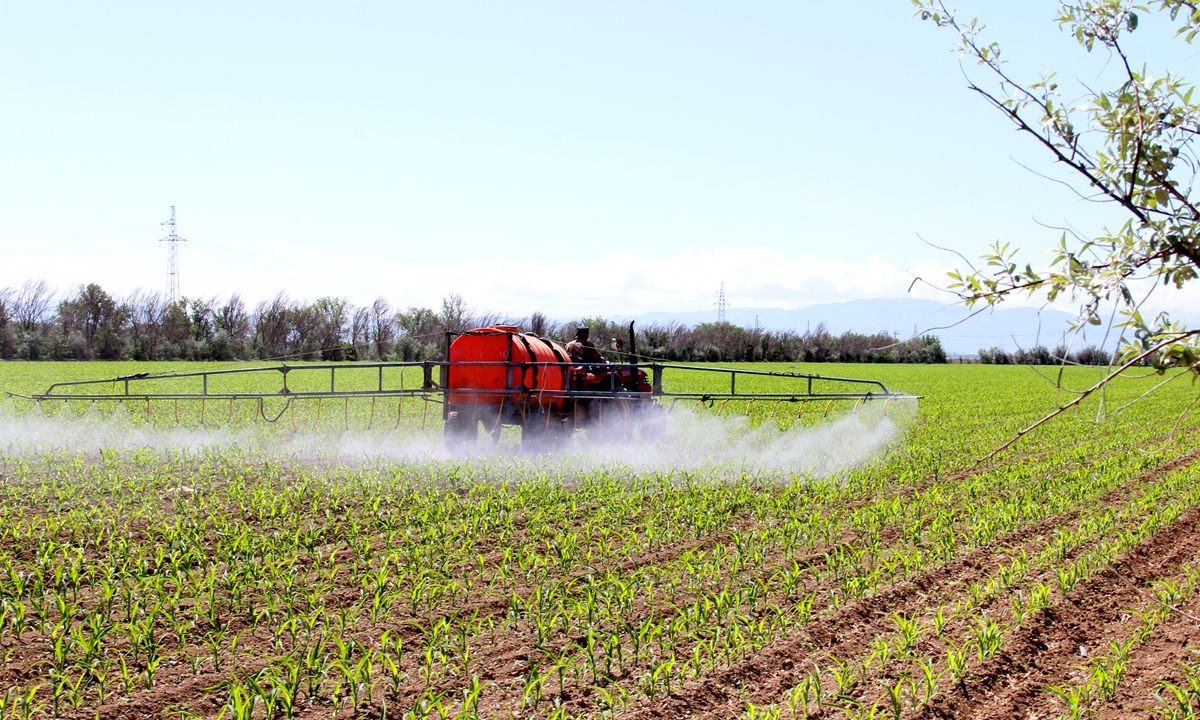
A farmer sprays pesticides in the corn field in the Tacheng Prefecture, Northwest China's Xinjiang Uygur Autonomous Region with a spray truck on May 14, 2024. Photo: VCG
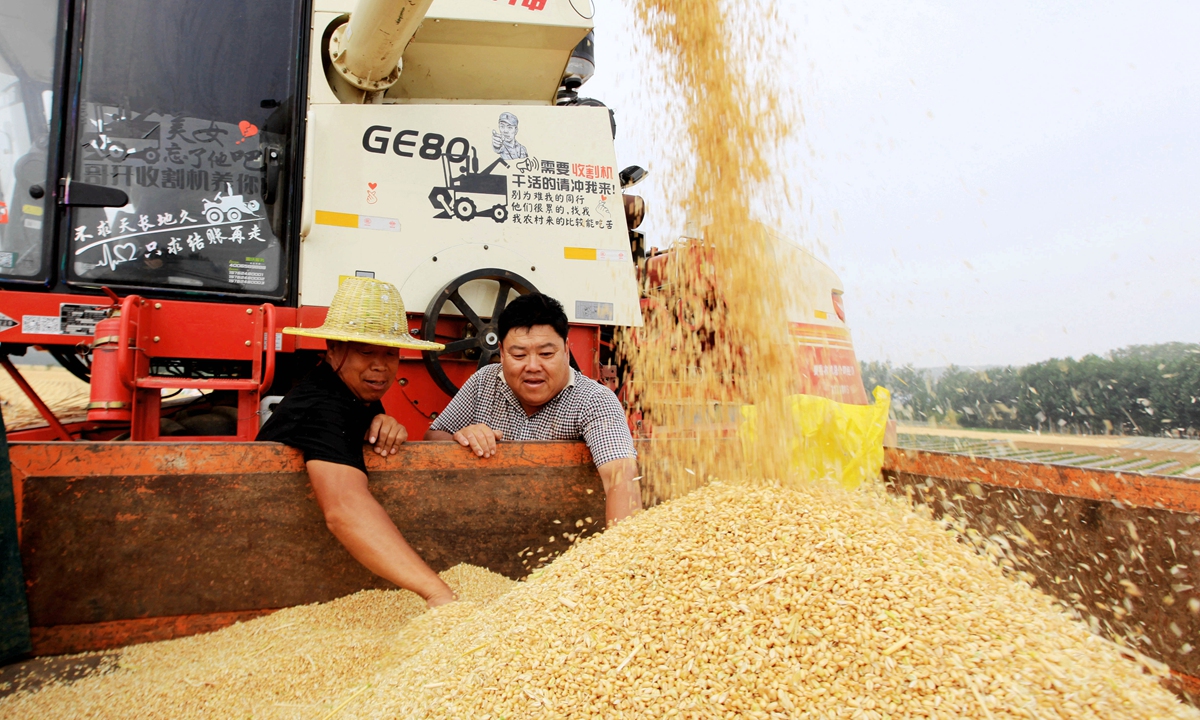
Farmers load the harvested wheat onto trucks in Linyi, East China's Shandong Province, on May 21, 2024. Photo: VCG
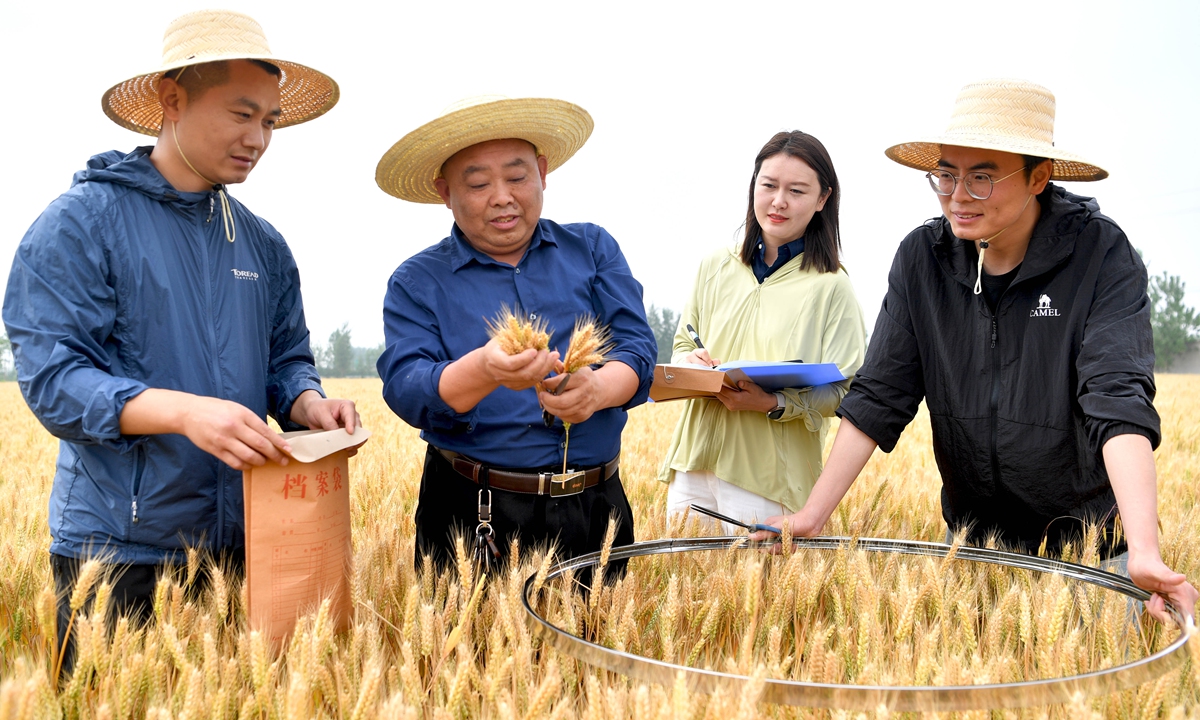
Agricultural technicians estimate wheat yield in the field in Bozhou, East China's Anhui Province, on May 21, 2024. Photo: VCG
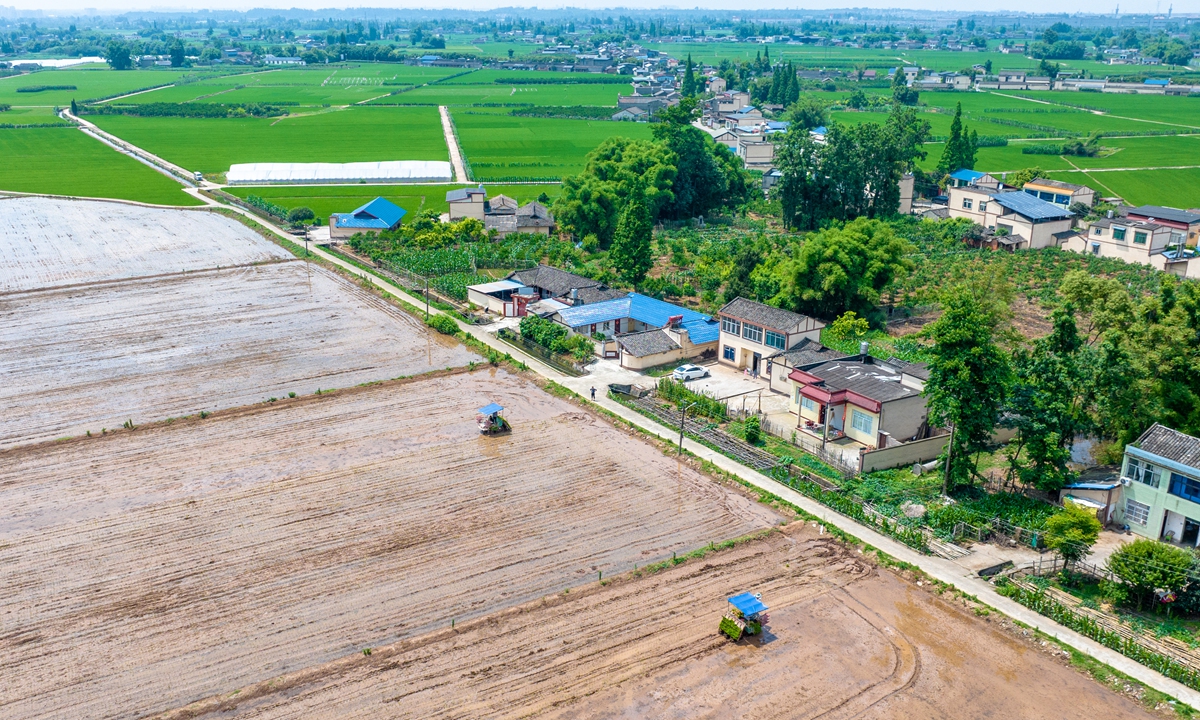
Unmanned rice transplanters shuttle in the fields in Meishan, Southwest China's Sichuan Province, on May 21, 2024. Photo: VCG
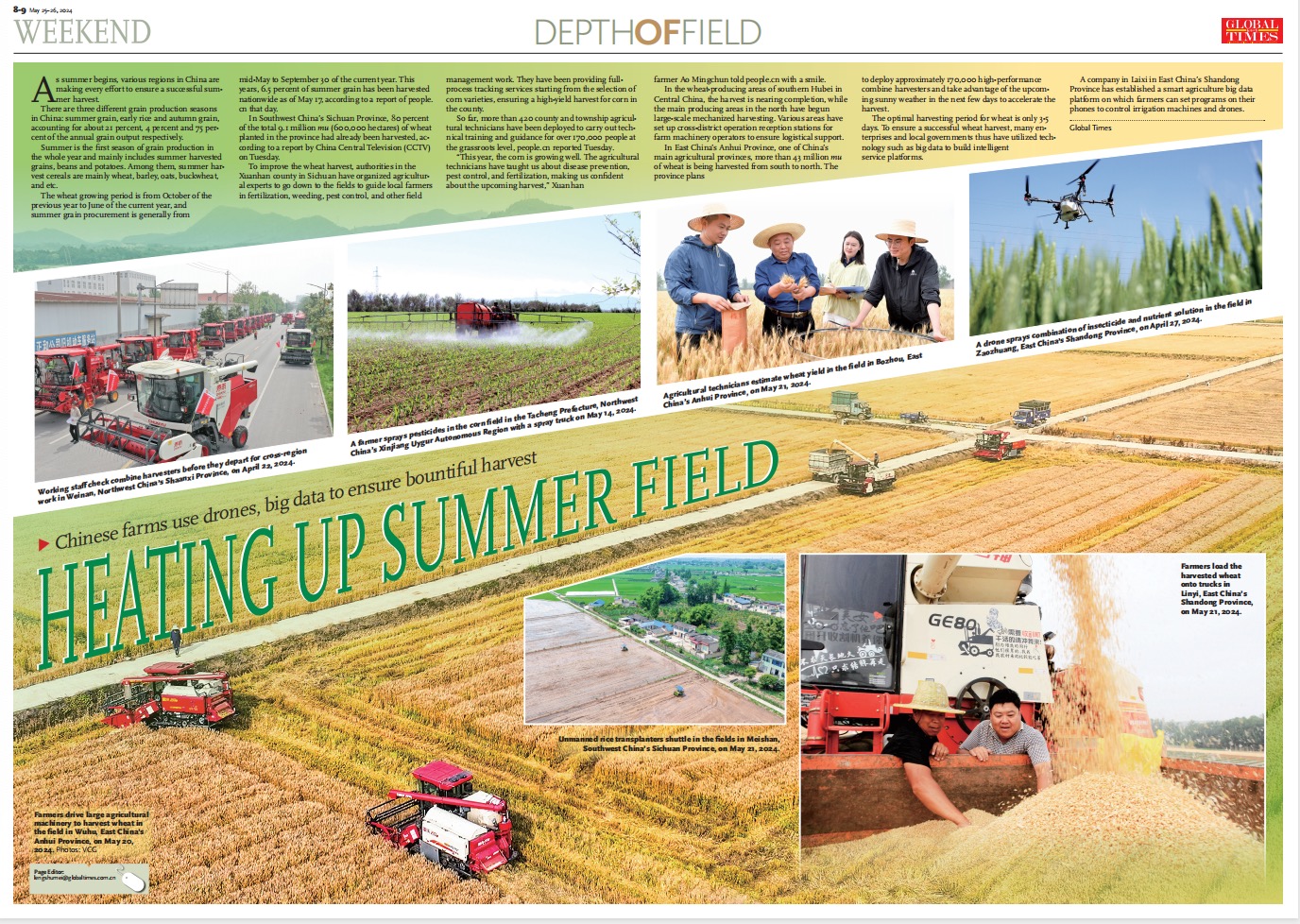
Heating up summer field


